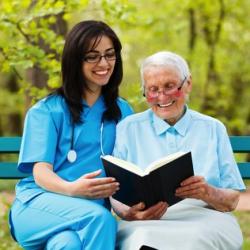 Earlier this summer I stumbled upon an AM Rounds post, the official blog of the journal, Academic Medicine, entitled Earlier this summer I stumbled upon an AM Rounds post, the official blog of the journal, Academic Medicine, entitled The Power of Humanities & Storytelling in Medical Education, by Daniel George, PhD, Penn State College of Medicine. I copied the link into my slush pile, noting immediately I had found a like-minded colleague who also valued the use of stories in healthcare, as I read:
Earlier this summer I stumbled upon an AM Rounds post, the official blog of the journal, Academic Medicine, entitled Earlier this summer I stumbled upon an AM Rounds post, the official blog of the journal, Academic Medicine, entitled The Power of Humanities & Storytelling in Medical Education, by Daniel George, PhD, Penn State College of Medicine. I copied the link into my slush pile, noting immediately I had found a like-minded colleague who also valued the use of stories in healthcare, as I read:
Storytelling is central to the human experience. In fact, it is quite likely that our human ancestors survived, in part, because they became adept at telling stories to convey complex information about environmental threats…social group dynamics, and to transmit crucial information and practices across generations. The urge to engage in storytelling is so irrepressible that it is almost a reflex…This narrative instinct is present even in persons with dementia, a vulnerable population too often defined in our society by their deficits rather than by their remaining strengths…
The post continues to outline a research study by George, who has studied Alzheimer’s, medical student stress, healthcare social media and medical humanities for some time. In this particular study, Penn State medical students were part of a storytelling program for those suffering from dementia. The program, TimeSlips, was originally developed by Ann Bastings, PhD, at the University of Wisconsin-Milwaukee. TimeSlips is:
…a group-based storytelling activity for persons with dementia that is increasingly used in caregiving settings worldwide. TimeSlips involves giving persons with dementia a visual prompt (generally a staged and surreal image with no recognizable subjects, see photo above) and encouraging participants to collectively tell a story about the subjects of a given picture.
While all the links above are worth exploring if you have time, the greatest takeaway for me was the fact that people with dementia, those known to have an increasingly greater struggle recalling the stories of their own lives, can create new, cohesive stories when given a visual prompt, according to findings by George and colleagues. Not only did the patients respond positively to the experience, but the medical students who participated were also found to have improved attitudes and greater empathy toward persons with dementia after participating. See An Arts-Based Intervention at a Nursing Home to Improve Medical Students’ Attitudes Toward Persons With Dementia, in the June 2013 edition of Academic Medicine for more information.
The following video is a call put out by the National Academy of Sciences. Participating A-List actor, John Lithgow, and director, George Lucas, highlight a greater need to embrace the humanities, and to recognize the integral connection between the humanities and science. Lucas states: Sciences are the how, humanities are the why…I don’t think you can have the how without the why. As the call for a greater emphasis on patient centered care is now linked to reimbursement, training healthcare students to embrace both the science and humanity of medicine, seems to be one logical solution to what the future of healthcare requires. Penn State Medical College appears to have a growing medical humanities program, successfully creating a medical learning environment steeped in the human experience, preparing care providers who will be ready to meet patients as people, understanding that their stories, real and imagined, can aid in the healing process for all involved.
(storytelling / shutterstock)






